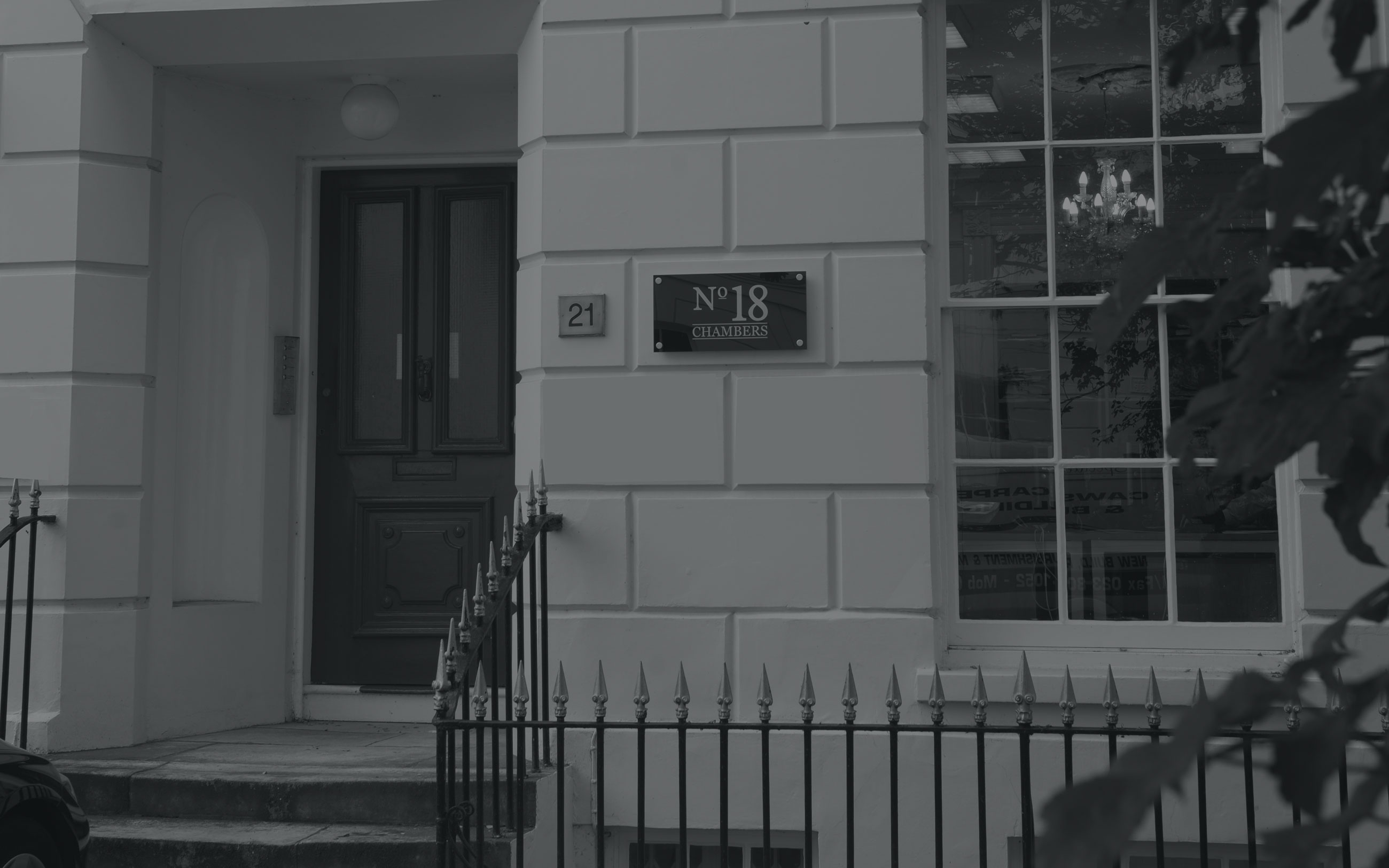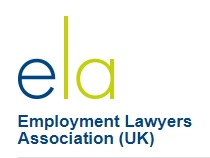Below are a summary of key issues and updates relating to children matters.
- Covert Recordings and Electronic Evidence
- In December 2022, the Family Justice Council (“FJC”) released draft guidance on covert recordings in family law proceedings concerning children.
- Over the last few years there has been an increase in covert recordings being used by parties to family law proceedings. In Re B (A child) [2017] EWCA Civ 1579, Sir James Munby identified the need for guidance on covert recordings in the context of the family courts. He remarked on the “myriad of issues” caused by them, “very few of which” had been “systematically considered either at first instance or in this court”. As noted in his judgment, it is important to distinguish between overt and covert recording; the latter is more problematic, but both are likely to give rise to issues.
- In the absence of specific guidance and faced with a topic of “growing significance for family courts”, the court invited the FJC to develop guidance to include:
- the lawfulness of what has been done,
- best practice outside the courtroom,
- the admissibility of the recording in evidence,
- other evidential and practice issues (such as how the recording is to be put in evidence and disputes as to authenticity and whether the recording has been edited), and
- identifying who is doing the recording and why.
- In response, the FJC has released draft guidance to inform “an understanding of good practice” and “encourage the development of such guidance by professional bodies”. The FJC makes clear that it does not intend the guidance to be considered as a guide for achieving covert recordings admissible in court but rather to highlight the potentially harmful consequences such recordings can have on the welfare of a child. The draft guidance also references the cost consequences, both in time and money, associated with satellite litigation required to manage the admissibility and weight to be attached to any covert recordings.
- What is a covert recording?
As defined by the FJC, “covert recordings are any recordings made without the express knowledge and permission of the people being recorded whether by video or audio”. They can be used for legitimate and illegitimate purposes by both public bodies and private individuals. The focus of the FJC’s guidance is on private individuals where the “contrasting lack of clear constraints regarding the legality of the making of the recording, and the protection of the privacy of the person subjected to the covert recording, are notable”.
- Why might individuals undertake recordings?
The FJC identifies several instances in which covert recordings may take place, including the recording by parents of children and the recording by parents of each other.
- Many parents who covertly record their child believe “the recording will provide some significant evidence relating to a disputed issue in their case”. The reality, however, is that there are few cases in which a secret recording has been of value to the recording parent. On the contrary, any evidential value taken from the recording by the court is more likely to centre on “the profound consequences for the welfare of any child subjected by a parent to such a degree of invasion of privacy and breach of trust”. Such was the case in M v F (Covert Recording of Children) [2016] EWFC 29, in which The Honourable Mr Justice Peter Jackson held that the recording did not assist the court. He highlighted that it:
- would further damage the relationship between the relevant adults,
- demonstrated the recording parent’s inability to trust professionals,
- created a secret that could affect the child’s relationship with the recording parent in the future, and
- affected the family’s standing in the community.
- As to the more general point of recording children either overtly or covertly, The Honourable Mr Justice Peter Jackson stated: “It is almost always likely to be wrong for a recording device to be placed on a child for the purpose of gathering evidence in family proceedings, whether or not the child is aware of its presence.”
- The draft guidance says covert recordings by parents of each other may be influenced by a parent perceiving the recording as “the only way to illustrate their experience of behaviour of which they complain”. In some circumstances, however, such a recording is “a form of surveillance which in itself can be an example of distorted and obsessive thinking which can constitute a form of harassment” or “controlling or abusive” behaviour. The FJC further says that “repeated covert recording of one parent by another has been held by the court to be highly relevant to the welfare determination when assessing and determining arrangements for the child”.
- Considerations relating to the covert recording of children
The FJC sets out some important considerations to which covert recordings give rise. Such considerations include:
- The implications for the welfare of the child and family
The court “must consider the degree to which the nature of the recordings is pertinent to the welfare analysis of the child”. Consequences may be direct and indirect. In Re C (A Child) [2015] EWCA Civ 1096, the court noted the father’s willingness to sacrifice the child’s emotional welfare by using covert recordings and photographs to criticise the other parent.
- The child’s potential need for legal representation
Due to “the extent to which the court will need to be guided by evaluation in this context of the child’s welfare, needs, wishes and feelings”, it will need to consider the appointment of a children’s Guardian.
- The decision as to whether and how the child should be told they are the subject of a recording
The court must determine whether or not “a child’s welfare requires them to be informed they have been the subject of recordings”. In order to reach this decision, “the advice of a court-appointed Guardian is likely to be essential”.
- The potential requirement for the child to give evidence
To evaluate the weight to be attached to the content of a recording, a child may be required to give evidence. The child’s wellbeing will be at the forefront of the judge’s mind in determining whether to do so. The court “will seek to find a balance between the advantage of hearing the child’s evidence in the proceedings and any possible damage to the child’s welfare in giving evidence”, noting the psychological harm that could be done to a child.
- Further consequences arising from covert recordings include:
- significant costs arising from the management of recordings such as transcribing (even though the recording may not affect the outcome of the case) and possible costs sanctions,
- possible derivative civil actions brought by the individual who has been recorded,
- a risk of injunctive proceedings or criminal exposure relating to harassment, stalking or coercive and controlling behaviour,
- a further risk of compromising the prospects of any potential prosecution or judgment in the family court.
- It is also important to highlight the restrictions on the use of any evidence in court proceedings and rules on confidentiality, particularly concerning a child. These are subject to the strict provisions of the Family Procedure Rules 2010 aimed at preserving the anonymity of a child. Where a covert recording is distributed or published to other individuals or on social media, it may amount to defamation (where the recording is used to demonstrate the truth of an allegation and that allegation is unproven) or contempt of court.
R v S [2002] EWFC 65
Her Honour Judge Harris, sitting at the Central Family Court, 9th May 2022.
Summary of Facts
- Allegations of coercive and controlling behaviour made by M against F.
- 29 Google Nest cameras in the mother’s home.
- Short clips of video footage were admitted into evidence by the Judge on the basis that they were demonstrative of the sort of abusive behaviour about which M complained.
- ISW instructed to prepare an assessment.
- The ISW suggested he be granted access to some footage from the Google Nest cameras for the purpose of gaining a clearer picture of M’s parenting; limited to 72 hours.
- M did not consent to the footage being disclosed and argued it was an unjustified infringement of her Article 8 rights. The Judge agreed.
- The Judge considered the usual mode of reporting in private law children cases i.e. limited observations, gathering evidence from 3rd parties.
- Approach to disclosure
HHJ Harris held that the relevant principles as to disclosure are as per Dunn v Durham CC [2012] EWCA Civ 1654;
- Is the disclosure relevant?
- If it is, the burden is on the person in possession to show they would be adversely affected by disclosure;
- The task on the court is to balance the fair trial rights of one party vs the confidentiality rights of the other;
- Denial of disclosure is limited to that which is strictly necessary;
- The Court needs to consider managing the competing interests by way of limited or restricted disclosure, but again only insofar as that is necessary
Decision
- The Judge discussed the first principle of relevance and commented on it as follows:
“(17) However, I observe that the Dunn case is a civil case where the CPR prescribes a formalised code dealing with disclosure and inspection. The family courts have much wider discretionary powers as encapsulated in the FPR as just cited. That said, both parties agree that if the test of relevance is met, there is a need for a balancing of Convention rights, specifically the Article 6 rights of one party as against the Article 8 rights of the other.”
- Following submissions from both sides and consideration of the fact that the judge had not seen the footage, the judge concluded that;
“(19) Initially I was attracted to the argument for lack of relevance, but on reflection I have concluded that it delimits the court’s function too narrowly, particularly having regard to the terms of Mr Power’s instructions. (20) I have therefore concluded that the recordings could potentially yield information of relevance to the court’s welfare decisions.”
- However, the case was not determined on the basis of the footage being relevant, as the Judge accepted the mother’s submissions that;
“(22) the disclosure would be a gross, even grotesque, invasion of the mother’s privacy exacerbated by the background of her allegations of coercive and controlling behaviour. Disclosure to a single person represents a breach of the mother’s Article 8 rights.”
“(23) this application has caused the mother great distress and the impact on her mental health could affect the children. Part of the mother’s Article 8 rights is the preservation of her mental health as a precondition to the effective enjoyment of her right to respect for her private life.”
- The Judge’s conclusion is as follows;
“(33) I am satisfied that disclosure on this scale would represent a gross invasion of the mother’s Article 8 rights and is unprecedented. It is, as Ms Fottrell put it, “a big deal.” There is a qualitative and quantitative difference between the disclosure permitted on the mother’s application and that which is contemplated by this application which goes to the root of an individual’s right to respect for his/her family life. Further, the balancing exercise must be carried out separately for each such application. I am satisfied that it is virtually inevitable that there will be wider dissemination than Mr Verdan posits in his two stage argument in such a high intensity dispute. I do not find the absence of such disclosure would impact on the father’s Article 6 rights. In my judgment, Mr Power will be able to carry on his investigations in the conventional way and is able to produce a meaningful report on the material available. I have noted that he has veered between saying such evidence “might be useful” and was “essential”. He recognised his suggestion was “highly controversial” and he has not sought to progress it by application, although that may be because he was made aware of the father’s application. Mr Power’s views are worthy of high respect but I consider he has been mistaken on this occasion and has not considered the full implications of his proposal. I consider had he heard and read the legal submissions he may have changed his views.
(34). As I accept the father’s Article 6 rights are not compromised, I have to go on to evaluate whether there is an exception to the mother’s Article 8 rights. I am satisfied that there is no exception to her Article 8 rights to privacy established under Article 8.2.
(35). Fundamentally the issue is one of proportionality. Not only is there the unjustifiable intrusion into the mother’s private life but there are also the children’s and other adults’ rights to be taken into account about which representations may be needed, jeopardising the trial fixture. There is also a risk that the trial might be derailed if such evidence were introduced e.g if there were arguments about the material which would require the court to watch it and hear submissions. The costs of the exercise are also disproportionate, regardless of the father’s wealth. I do not take into account the allegations of coercive and controlling behaviour in reaching these conclusions as they are unproven. I do firmly take into account the President’s Guidance in The Road Ahead and the recent guidance referred to above about the need for robust case management and the focus on proportionality.
(36). This application, if granted, would represent a fundamental departure in the way such cases are investigated. Whilst there may still be a case where such a departure would be justified I am not satisfied this is one of them”.
* It was also queried in this case whether third parties, such as nannies, have a right to make representations in respect of use of footage in which they appear (Newman v Southampton CC [2022] 1 FLR 97).
Re M: Private Law Children Proceedings: Case Management: Intimate Images [2022] EWHC 986 (Fam) – Mrs Justice Knowles, sitting in the High Court Family Division, 29th April 2022
Summary of Facts
- This was a case management hearing, pending the re-hearing of a fact-finding following a successful appeal by M.
- M alleged that F was controlling and coercive, including humiliating sexual practices and name calling.
- The issues for the court included serious allegations of rape, non-fatal strangulation, F having an obsessive sexual compulsion, and F ‘having desires towards young looking girls, including school girls’.
- Both parties had previously adduced evidence of intimate videos and photos of one another.
- The clinical psychologist’s report advised against M being unnecessarily exposed to trauma-related material during the re-hearing, and that only the judge should view the material and be permitted to ask questions to M on it.
Definition of ‘intimate images’
- In determining the appropriate use of the intimate images, Mrs Justice Knowles defined the term as:
“(47) an image of a person, whether an adult or a child, naked or partially naked. Such an image can include part of a person's body, clothed or unclothed, such as breasts, genitalia or the anus, which are generally regarded as private. Intimate images include those of a person engaged in what is normally regarded as private behaviour such as washing, urinating, masturbating or engaged in other sexual acts either alone or with another being.”
Decision
- Mrs Justice Knowles determined that the production of such intimate images must be linked to relevance, and that the court ought to be put on notice of the nature of the evidence in advance.
“(66) In approaching this exercise, I have had firmly in mind the court's powers to control the evidence the parties may seek to adduce in support of their respective cases. The relevance of the material to the allegations made by both parties and its probative value have been my starting point. I part company from Mr Tyler QC in that I do not accept that it will be rare for relevant evidence to be excluded. It will be excluded if it is deployed in great amounts without justification or addresses the same issue repeatedly and without bringing anything of forensic value to what has already been submitted. For example, to persuade a court that a couple's sexual relationship was mutually satisfactory does not require the admission into the evidence of numerous still and moving intimate images of the couple having sex. However, I accept his submission that the relevance test must – of necessity – be generously applied at a pre-hearing stage but that is not an open door to permit everything including the proverbial kitchen sink being deployed to bolster a case.”
“(67) Put simply, the court must - in this case - undertake a balancing exercise between the father's right to a fair hearing when faced with extremely serious allegations and the mother's need to have a fair process which does not impact adversely on her ability, as a vulnerable witness, to give her best evidence to the court. The introduction into the proceedings of intimate material which is likely to be distressing to the mother and also embarrassing for the father is one of the considerations relevant to that exercise.”
“(68) I agree with Miss Fottrell QC that the mother's sexual history and relationships with others is of no relevance when the focus of this hearing is her relationship with the father. I also accept that there may be limited value in viewing a still
intimate image in order to be able to determine any issues of fact. However, a small number of such images may still have relevance and probative value, for example, to demonstrate that evidence may have been manipulated or to contradict an account given in a witness statement. Whether it is necessary for them to be viewed is another matter entirely.”
- The Judge conducted an exercise of reviewing each item of evidence sought to be relied upon by F and determined whether it was relevant, had probative value and should be viewed. The Judge then went on to direct that;
“(75) unless it is essential to do so, no intimate images – be they still or moving - which are to be viewed will be viewed in the courtroom with all the parties present. Further, this material will only be viewed by the advocates acting for each party together with instructing solicitors. The parties are to co-operate in the production of an agreed, password protected bundle of such material and to agree transcripts where I have indicated they should do so.”
Guidance on dealing with intimate evidence
- Mrs Justice Knowles provided the following guidance concerning the use of intimate images within private law proceedings and makes suggestions for how such images should be admitted into, and managed, within private law children proceedings.
“(76) It will be apparent to readers of this judgment that I have grave concerns about the use of intimate images in private law children proceedings where allegations of abuse, specifically domestic abuse, are made. I perceive it to be a problem which is already present in a growing number of private law children cases and one which is likely only to increase given the growing use of still and/or moving images to document intimate relationships. In this case, the volume of intimate images previously admitted without any scrutiny is itself a strong argument for guidelines to encourage the court to control this type of evidence in private law children proceedings. However, there is a further compelling reason for such guidelines, namely the emotional and psychological harm which may be caused to the parties, and particularly to an alleged victim of abuse, by the indiscriminate use of this material.
(77). During the hearing on 29-30 March 2022, I made a number of observations as to how intimate images should be managed within the context of private law children proceedings and invited counsel to collaborate to produce some agreed guidelines. I am grateful to them for doing so. What follows is drawn from their written document which incorporated the observations I made during the hearing:
- A) Sexually explicit or intimate videos and photographs should not be filed as part of evidence without a written application being made to the court in advance.
- B) Any such application will require the court's adjudication, preferably at an already listed case management hearing.
- C) It is for the party making such an application to persuade the court of the relevance and necessity of such material to the specific factual issues which the court is required to determine.
- D) The court should carefully consider the relevance of the evidence to the issues in the case together with the likely probative value of any such evidence.
- E) As part of its analysis and balancing exercise, the court will need to consider all the relevant factors including (i) any issues as to vulnerability in relation to any of the parties and the likely impact on any such parties of the admission of such evidence and the manner in which it is used in the proceedings; and (ii) if it is able to do so at a preliminary stage, whether the application/use of such images is motivated, in whole or in part, by a desire to distress or harm a party.
- F) The circumstances in which a court will permit the inclusion in evidence of sexually explicit or intimate videos or photographs of any person are likely to be rare, in particular, in circumstances in which that person does not consent to such material being admitted.
- G) Where the court is being asked to admit such material, the court should consider whether there may be a range of alternatives to the viewing of such material, for example but not limited to:
- i) seeking an admission/partial admission in respect of the alleged conduct
ii) agreed transcripts and/or descriptions of any videos
iii) playing only the audio track of any video recordings
iv) using a still image rather than a video or a short excerpt from a longer video v) editing images to obscure intimate parts of the body - vi) extracting meta data as to the timing and location of the evidence
vii) focused and specific cross examination on the issues
viii) consideration of the use of other evidence to prove the particular fact in issue instead. - H) If the court decides to admit any sexually explicit or intimate images/videos for any purpose, care should be taken to limit the volume of such evidence to that which is necessary to fulfil the purpose for which it is admitted;
- I) The court should determine who can view the material that is to be admitted and limit this where necessary, bearing in mind its private character and the humiliation and harm caused to those both depicted and involved in the proceedings;
- J) If the evidence is considered relevant, a starting point should be to say that it should incorporate the lowest number of images, seen by as few people as necessary, and viewed in the least damaging way;
- K) It would be helpful to consider how best to ensure that the evidential security of such material can be maintained (for example, by using only password protected files) both within the hearing itself and outside it, and how the material is deployed within the proceedings;
- L) Likewise, specific consideration should be given to the protection and safeguards necessary in respect of any video evidence relied upon (for example, such evidence being made available on a single laptop and brought to court, or the distribution being limited to a core specified legal team on behalf of each party).
(78). I recognise that judges dealing with private law children proceedings in which allegations of domestic abuse are made already face significant difficulties stemming both from the volume of such work within the family justice system and from the reality that many parties are unrepresented. My suggestions for the management of intimate images in such proceedings are intended to be straightforward and to discourage their use save where strictly necessary to the issues which the court needs to resolve.
Trauma and Oral Evidence
- A further consideration in this case was M’s effective participation given her diagnosis of complex PTSD and depressive disorder. Particularly given the clinical psychiatrists view as below;
“(22) High levels of negative affect may predispose the mother to intense maladaptive emotional responses and dysfunctional cognitive processes such as selective attention to negative or threatening cues and hypervigilance to threat. Such maladaptive cognitive processes can result in emotional dysregulation and impaired social functioning. Moreover, an increased perception of threat accompanied by elevated emotional states might exacerbate negative responses to ongoing stressors or serve itself as a source of chronic stress, with the resulting stress-related co morbidities. As a result of this, trauma related distress is often obscured by seeming innocuous behaviour or response. Within a courtroom setting, it is often challenging to identify when traumatic stress has been induced (or 'triggered'), and the resulting behaviour can appear confrontational, defensive, bizarre, or evasive, and thus can give the impression that an individual is not in distress.”
- Mr Justice Knowles concluded that an appropriate way to proceed with M given the above was to make the following directions;
“(82)
a) The mother not coming into direct or indirect contact with the father during the
hearing or in the court precincts;
b) The father not being able to see the mother whilst she gives her oral evidence; c) The mother being afforded regular breaks during her oral evidence including additional breaks if the mother should display signs of "trauma related distress"; d) Exposure to areas/topics of questioning in advance of cross-examination;
e) The avoidance of unnecessarily intrusive questioning regarding allegedly traumatic experiences;
f) And the avoidance of unnecessary exposure to trauma-related material.
- Fact Finding: Proportionality and Necessity
- On 16th January 2023 the PLO was relaunched and in order to keep care proceedings within a set duration of no more than 26 weeks this has led to an emphasis on the need to limit the amount of Court hearings within care proceedings, in addition to attempting to narrow areas of dispute as far as possible and to identify the key issues which necessitate the hearing of evidence. This is not a new concept and is something the Courts have been doing for a number of years.
- The President set out his guidance in relation to active case management in The Road Ahead 2021, which made clear that the Court must attempt to narrow issues so far as is possible; ‘If the Family Court is to have any chance of delivering on the needs of children or adults who need protection from abuse, or of their families for a timely determination of applications, there will need to be a very radical reduction in the amount of time that the court affords to each hearing. Parties appearing before the court should expect the issues to be limited only to those which it is necessary to determine to dispose of the case, and for oral evidence or oral submissions to be cut down only to that which it is necessary for the court to hear.’
- The Case Management in Public Law Children Cases: March 2022 ‘Making every hearing count’ has stressed the need to reduce the number of hearings within care proceedings and to reduce the current burden on the Court system, in what is termed as ‘the need for a radical recalibration of the resources in terms of the time and the number of hearings’.
- The case management guidance also makes clear that ‘Save where there are clear reasons to the contrary, the final hearing should be a rolled‐up hearing to determine such factual/threshold issues that must necessarily be determined together with the final welfare decision.’ Accordingly, the prospect of separate threshold/fact finding hearings is increasingly unlikely, save in the single issue cases such as those identified in Re S (A Child) EWCA Civ 25. The guidance we are provided with is advocating an intense focus on composite hearings at which the determination of any disputed factual issues must be limited to what is necessary, in line with the principles set out within the authorities.
- The judgment of MacDonald J in A Local Authority v X & Ors (Need for Finding of Fact Hearing) [2023] EWFC 121 drawing together the various authorities relating to the issue of the circumstances in which it is necessary and proportionate for the Court to engage upon a fact finding hearing and this case highlights the need to carefully scrutinise issues of dispute and determine what, if any issues require litigation within a contested hearing.
- In order to fully understand the approach that the Family Court will take in relation to this issue, it is necessary to consider in detail, the applicable legal framework.
Proportionality: the legal framework
- The overriding objective sets out an obligation on the Court’s part to deal with cases justly, having regard to the welfare issues involved. Rule 1.2 of the Family Procedure Rules 2010 provides that:
“Dealing with a case justly includes, so far as is practicable –
(a) ensuring that it is dealt with expeditiously and fairly;
(b) dealing with the case in ways which are proportionate to the nature, importance and complexity of the issues;
(c) ensuring that the parties are on an equal footing;
(d) saving expense; and
(e) allotting to it an appropriate share of the court's resources, while taking into account the need to allot resources to other cases.”
- Rule 1.4 imposes a duty on the Court to manage cases actively. Rule.1.4(2) provides that active case management includes identifying the issues at an early stage, deciding promptly which issues need investigation and hearing and which do not, and considering whether the likely benefits of taking a particular step justify the cost of taking it.
- s.1(2) of The Children Act 1989 as identified by Peter Jackson LJ in H-D-H and C recognises the general principle that any delay in determining the question is likely to prejudice the welfare of the child and in public law proceedings; this principle was further bolstered by the amendments introduced by the Children and Families Act 2014, which implemented via s.32(1) the requirement for a time-table to be drawn up allowing for proceedings to be disposed of within 26 weeks.
- s.32(3) requires the Court to have particular regard to the impact which the timetable would have on the welfare of the child to whom the application relates and on the conduct of the proceedings.
- There are a number of well-known authorities relating to the question of the necessity of a fact finding hearing taking place:
- Oxfordshire County Council v DP, RS and BS [2005] 2 FLR 1031,
- The subsequent judgment of the Court of Appeal in Re H-D-H and C (Children: Fact-Finding) [2021] EWCA Civ 1192, in which Peter Jackson LJ confirmed that the principles set out by the now President of the Family Division in the Oxfordshire case, remain authoritative.
- The key issue is that of necessity. In Re H-D-H and C, Peter Jackson added further, commentary to the set of principles which the Court must have regard to taking into account the Judgment in the Oxfordshire case as follows;
- When considering the welfare of the child, the significance to the individual child of knowing the truth can be considered, as can the effect on the child's welfare of an allegation being investigated or not.
- The likely cost to public funds can extend to the expenditure of court resources and their diversion from other cases.
- The time that the investigation will take allows the court to take account of the nature of the evidence. For example, an incident that has been recorded electronically may be swifter to prove than one that relies on contested witness evidence or circumstantial argument.
- The evidential result may relate not only to the case before the court but also to other existing or likely future cases in which a finding one way or the other is likely to be of importance. The public interest in the identification of perpetrators of child abuse can also be considered.
- The relevance of the potential result of the investigation to the future care plans for the child should be seen in the light of the s. 31(3B) obligation on the court to consider the impact of harm on the child and the way in which his or her resulting needs are to be met.
- The impact of any fact finding process upon the other parties can also take account of the costs for the local authority, even if it is the party seeking the investigation, in terms of resources and professional time that might be devoted to other children.
- The prospects of a fair trial may also encompass the advantages of a trial now over a trial at a possibly distant and unpredictable future date.
- The justice of the case gives the court the opportunity to stand back and ensure that all matters relevant to the overriding objective have been taken into account. One such matter is whether the contested allegation may be investigated within criminal proceedings. Another is the extent of any gulf between the factual basis for the court's decision with or without a fact-finding hearing. The level of seriousness of the disputed allegation may inform this assessment. As I have said, the court must ask itself whether its process will do justice to the reality of the case.’
- The Court of Appeal was clear that the Court should be able to make a ruling concisely by referring to the main factors present in the case and identifying where the balance falls and why.
- In relation to the issue of the evidential result and its relation to ‘likely future cases in which a finding one way or the other is likely to be of importance’, attention has in some cases, been drawn to the fact that a respondent parent within care proceedings, may go on to have future children. This was referred to as the ‘different child factor’ by Mostyn J in Barnsley Metropolitan Borough Council v VW & Ors [2022] EWFC 83, where the ‘whole truth and perpetrator identification factors’ were also referred to. At paragraph 37 of his judgment, Mostyn J ‘re-expressed’ the checklist articulated by Peter Jackson LJ in Re H-D-H, effectively providing that (i) the significance to the individual child of knowing the whole truth cannot, of itself, be a main purpose of the investigation, (ii) the potential utility of the evidential result in a future case about another child cannot, of itself, be a main purpose of the investigation. Similarly, the public interest in the identification of perpetrators of child abuse cannot, of itself, be such a purpose, and (iii) in terms of necessity, the Court must be satisfied that the findings, if made, would produce something of importance for the welfare decision.
- The Court of Appeal has subsequently made clear having referred to Mostyn J’s judgment that, for the avoidance of doubt, it is the statement of principles summarised in the Oxfordshire case and in Re H-D-H to which Courts should turn when making these often difficult decisions, as identified by Baker LJ in Re H-W (Care Proceedings: Further Fact-Finding Hearing) [2023] EWCA Civ 149 (at para 24). Further to this, the Court of Appeal has also recently made clear that decisions that reformulate a binding legal test or attempt to set up a different test operate as a distraction and a drain on resources (Re J (Children: Reopening Findings of Fact) [2023] EWCA Civ 465 at para 48).
- In terms of the necessity for the Court engaging upon a finding of fact exercise, the Court of Appeal has considered that the word ‘necessary’ should be interpreted as having ‘a meaning lying somewhere between ‘indispensable’ on the one hand and ‘useful’, ‘reasonable’ or ‘desirable’ on the other hand”, having “the connotation of
the imperative, what is demanded rather than what is merely optional or reasonable or desirable.’ (as per Sir James Munby in Re H-L (A Child) [2013] EWCA Civ 655, citing Re P (Placement Orders: Parental Consent) [2008] EWCA Civ 535).
- Although the Court in Re H-L was considering the definition in the context of Part 25
FPR 2010, it is suggested that the same definition of the word ‘necessary’ should be
applied in the context of the issue of proportionality. Necessity in this context should
be viewed by Lieven J in Derbyshire County Council v AA & Ors [2022] EWHC
3404 (Fam), as meaning that a finding of fact hearing should not be undertaken unless it is going to make a material difference to the welfare outcome and the orders which may be made.
The overall approach
- The guidance which has to be applied when determining whether a finding of fact exercise is necessary remains that set out by the President in the Oxfordshire case, as elaborated upon by Peter Jackson LJ in Re H-D-H. There is inherent danger in trying to add to, alter, or expand upon elements of a legal test approved by the Court of Appeal, as is clear from the more recent observations made by that Court, referred to above.
- How each case will be dealt with will depend entirely upon the individual facts present. Some cases will inevitably require a find of fact hearing, for example a single issue case involving death or serious injuries caused to a child; it findings are sought against parents and, absent those very serious findings, threshold would not be established, then the Court will in those circumstances, have to determine the disputed threshold allegation.
- Similarly, cases involving allegations of serious sexual abuse, where absent such findings, threshold would not be established. Such cases would also fall into the category in which a fact finding hearing is likely to be necessary and proportionate.
- There are a number of points however, which MacDonald J helpfully articulates in A Local Authority v X & Ors, which should be considered when analysing the Oxfordshire principles in any given case. In particular, the argument that the fact finding exercise if necessary in order to provide a child with a factually accurate narrative of what has actually taken place.
- The facts of A Local Authority v X involved a subject child, ‘Z’, whose nephews had both died in the care of his elder sister. The eldest of the nephews, ‘C’, died in the house in which Z was living with his sister, and mother, and had resulted in the local authority instigating care proceedings. It was however, the case that the s.31(2) criteria were amply made out on the basis of chronic neglect, leaving aside entirely the cause and circumstances of C’s death. C’s post-mortem report was outstanding and was expected at some point during the weeks following the hearing, albeit no definitive timescale had been confirmed. In refusing to adjourn the case in order to await the receipt of the post-mortem report, MacDonald J applied the Oxfordshire principles on the assumption that, taken at its very highest, the post-mortem would provide the local authority with sufficient evidence in order to seek findings against either or both, Z’s mother and his sister, in relation to C’s death. • In relation to the issue of ‘truth’ and providing Z with a factual narrative of what happened to his nephew, MacDonald J observed as follows;
‘I accept that, as a general proposition, it is in a child’s best interests to have an accurate understanding of the circumstances by which he or she came to be the subject of proceedings and by which, if that is the outcome, came to be living away from his or her family. I further accept that, in broad terms, being provided with an accurate narrative of the circumstances of C’s death would be in Z’s welfare interests. However, that is not the end of the matter in circumstances where each case must be considered on its own facts.
The submissions made on this issue operate on the assumption that Z needs to know from the court what happened to C. There is no evidence before the court however, to indicate that the need for Z to understand his current circumstances, and the justification for the care plan advanced in respect of him, can be met only by his being provided with a factual determination from the court as to how C died. Indeed, the evidence of Professor Billington is that bereavement and trauma related therapeutic work would have to be delivered at a level appropriate to a child of his developmental age (which for Z is currently in the range of 6 to 8 years), that its form remains to be determined once he is secure in placement and that, given his loyalty to his birth family, a non-verbal therapy could be considered including art or playbased work. Within this context, it is not clear that Z’s welfare needs require an account to be provided by the court by way of a finding of fact hearing into the circumstances of C’s death (any findings made by the court would, of course, not constitute objective truth, but rather the court’s view as to the most likely cause of C’s death).’
- Simply stating that it is in a child’s welfare interests to be provided with an accurate factual narrative is inadequate; the Court needs to be satisfied that there is evidence supporting the proposition that a child’s welfare needs require an account to be provided in relation to a specific set of disputed facts. Such evidence could come in the form of the views of a psychologist, or social work evidence. What needs to be articulated is how the provision of a factual narrative is necessary for the individual child involved; reciting generic principles relating to the benefits of a child knowing ‘the truth’ is unlikely to be afforded significant weight by the Court.
- The ‘truth factor’ is only one element that must be weighed into the analysis of the Oxfordshire principles, in the context of considering the subject child’s welfare, with MacDonald J noting in Z’s case, that; ‘whilst Z has a clear welfare need for life story work and therapeutic intervention and bereavement counselling, such advantages as there may be in that work being informed by findings made by the court are heavily outweighed by the delay that would be caused to the commencement of that work by an attempt to reach that goal.’
- The relevance to any prospective findings to any future care plan for a subject child is undoubtedly an important factor, for example when findings would impact upon a child’s placement or upon contact arrangements going forward. In this respect, MacDonald J commented that;
‘I accept that in some cases, the need to assess whether contact can take place safely in the future will be a cogent factor in determining whether a particular fact finding exercise is necessary. As originally noted in by McFarlane J (as he then was) in Oxfordshire, an intention by a parent to seek unsupervised contact in the future can be a factor pointing towards the need for a finding of fact hearing. However, and at risk of re-labouring the point, each case turns on its own specific facts.’
- Again, the issue of future contact arrangements and placement are important factors but must be weighed into the analysis of the relevant legal principles in each individual case. Each case is fact specific. That said, in relation to the implications upon future contact arrangements, the views of the President back in 2005, in the Oxfordshire case, merit consideration; ‘In addition I am struck by what, with respect to him, I may call the intellectual dishonesty of the father's position. His stance on the factual dispute (which is in effect to accept no culpable behaviour) is completely incompatible with his acceptance of limited, long-term, supervised contact. This, as is candidly admitted, is a 'pragmatic' position to avoid the feared consequences of the proposed investigation. It is a tactical position. It is not child focussed and has no internal logic. The apparent unanimity of view about the final orders hides the reality of a very substantial and important factual dispute between the father and the other parties.’
In that case, the President determined that it was necessary to hear a fact finding exercise in order to determine the issue of a child’s fractured arm and respiratory collapse.
- The final issue of note in relation to the judgment in A Local Authority v X, is that relating to post-mortem reports. These reports are often completed over a very lengthy timescales and awaiting a post-mortem report in a case involving child death may result in months of delay within the ambit of the care proceedings. The President has recently considered the issue of post-mortem delays in Re G (Child Post-Mortem Report: Delays) [2022] EWFC 55. In that case, the President made clear that how any future case involving a delayed post mortem report is dealt with will be a matter for the judge in that case. He did not set out specific guidance (having agreed that it would be inappropriate to attempt to do so)
- In relation to possible approaches to the issue of post-mortem delays, the President identified the two principle questions for the family Court; (i) whether the threshold criteria pursuant to s.31(2) of the 1989 Act are satisfied and (ii) what order should be made having regard to the welfare of the subject child as the court’s paramount consideration). He then observed as follows;
‘Whilst neither H-D-H nor Lincolnshire CC v CB dealt with the situation facing the court as a result of delays in the provision of post-mortem reports, evaluation of the case management options available to the court in such cases through the lens described in Oxfordshire CC v DP and H- D-H is likely to be appropriate. In cases where the death of a child is sudden, with little or no evidence of pre-death injury or symptoms, for example where the cause of death is suspected to be suffocation, there may be no alternative but to await receipt of the full post-mortem report. But in other cases, for example the present one, where there is apparently a range of evidence prior to death which, if established, would be sufficient for the court to determine both the s 31 threshold and the ultimate welfare decision, it may not be ‘necessary’ to await the full postmortem report where the impact on the child’s welfare in postponing the process until that report is received may be disproportionate and unacceptable.’
- In single issue cases where the sole threshold issue relates to causation of death, awaiting a full post-mortem may be the only outcome, particularly in cases such as those involving alleged suffocation/overlay. However, there may be other cases in which awaiting a post-mortem is unnecessary and a constructive approach can be taken by advocates. For example, the President cited the submissions made on behalf of the father in Re G, in relation to the possibility of seeking early instruction of neurosurgical/neuroradiological and other expertise, based upon the available medical documentation and imaging, as an alternative to awaiting a full post-mortem report. The Family Court is determining different questions to those before the criminal and coronial jurisdictions.
- A central reason why A Local Authority v X is of particular note, is that MacDonald J refused to adjourn the matter in order to obtain the post-mortem report before undertaking a proportionality evaluation in line with the Oxfordshire principles. Rather, his lordship proceeded to undertake the evaluation on the basis that taken at its highest, the post-mortem would support the prospect of findings being made against the adult parties relating to C’s death. In adopting this approach the Court was able to fully and coherently apply and analyse the Oxfordshire principles without having to await the post-mortem.
- This was an inventive and pragmatic approach that circumvented further delay. It is also an approach which may well be adopted by the Family Courts going forward, in cases where post-mortem reports are outstanding and there is a real questions relating to whether a finding of fact hearing will be necessary.
- The key factor in these cases is necessity and proportionality. Is it necessary and proportionate, to undertake a fact finding hearing, applying the relevant legal principles to the facts of the individual case?
- What is clear is that each case must be dealt with on its own individual set of facts, however in cases where the remit of any factual enquiry is in dispute, practitioners must be prepared to formulate their positions on the basis of the application of the principles and legal framework set out in detail above, as the President made clear in the November 2022 case management guidance; ‘A good deal of time can be wasted finding “facts” which will have little impact (if any) on the ultimate outcome of a case.’
- Leave to oppose adoption orders
- The Court of Appeal has once again considered the issue of leave to oppose adoption orders in Re M (A Child: Leave To Oppose Adoption) [2023] EWCA Civ 404, with the lead judgment given by Peter Jackson LJ. This was a successful appeal against the decision of a Recorder granting a mother leave to oppose an adoption order. The reason it is of particular note, is that aside from confirming the applicable legal framework in this area, which is well established, it address the dicta of Mostyn J in Prospective Adopters v SA (Father) (Rev 1) [2015] EWHC 327 (Fam) and Prospective Adopters v the London Borough of Tower Hamlets [2020] EWFC 26.
- In order for leave to be granted to oppose an adoption order under s.47 of the 2002 Act, a parent must cross a two stage hurdle; they must establish a change of circumstances since the placement order was made, and then, if they are able to do that, they must persuade the Court that it is in the child’s welfare interests for leave to oppose to be granted (i.e. should the Court revisit the plan of adoption and is this in the child’s welfare interests). What Mostyn J said in SA, was;
"Obviously the words "a change in circumstances" are not intended to be read literally. As soon as the placement order is made circumstances will change if only by the effluxion of time. What Parliament clearly contemplated was proof of an unexpected change in the basic facts and expectations on which the court relied when it made the placement order."
Whilst in the LB Tower Hamlets case, he added: "Obviously, changes that were clearly either foreseen or which were foreseeable at the time of the original order cannot qualify. Otherwise, the provision would be just another variation power."
He also stated the following in SA;
"Re P did not however address the question which I have identified namely whether the change in circumstances should be unexpected. In my judgment, in the absence of a specific reference by Parliament to actually foreseen changes (in contrast to section 14(2)(a) of the Matrimonial Proceedings and Property Act 1970) the changes in question must be unexpected and must exclusively attach to the basic facts and expectations which underpinned the initial order."
- In Re M Peter Jackson LJ rejected that approach;
‘There are several reasons for rejecting this approach:
(1) The language of the sub-section is simple and there is no reason to gloss it.
(2) In Re SA at [14] Mostyn J said that he intended to look at the provisions from first principles, but there was no occasion for him to do that. The issue of whether change must be unexpected, unforeseen or unforeseeable (and the concepts are not the same) did not arise in Re SA or in Tower Hamlets. The law had been recently and authoritatively stated in this court's decisions in Re P and in Re B-S.
(3) The proposition was inspired by an analysis of statutory provisions relating to the court's power to vary maintenance agreements: Re SA at [17-19]. Those provisions are irrelevant to legislation about the adoption of children. They concern changes of circumstance that occur following bargains made between the parties. The Act concerns placement orders imposed by the court for reasons of child welfare. The proper approach to construction will in each case be conditioned by the very different statutory purposes of these unrelated pieces of legislation.
(4) In the absence of a relevant contrary indication, the only conclusion that can reliably be drawn from the fact that a statute does not say whether a change of circumstances is foreseen or unforeseen is that it can be either. There is also a false logic to the argument that, because Parliament has amended one statute to provide that a change of circumstances may include a foreseen change of circumstances, every statute that does not do the same must mean the opposite.
(5) In the context of the Act, there is no reason whatever to raise the bar by burdening parents with the additional obligation of showing that the changes they rely upon were unexpected or, put another way, to deprive them of the opportunity to rely on changes that were foreseen or foreseeable. As Lord Justice Holroyde observed during argument, that would be very unfair. Expectations are not binary, foresight cannot be calibrated, and there may be a number of future possibilities of varying degrees of likelihood. For example, a parent may say at the placement order hearing that he will achieve sobriety or become drug-free, but the court may not be convinced. If, by the time of the adoption proceedings, he is sober, that cannot sensibly be regarded either as unexpected, unforeseen or unforeseeable simply because it was uncertain or because the alternative was more likely. Why should he be worse off for having achieved something the court foresaw as possible but did not consider probable?
(6) To introduce a requirement relating to expectations would be unworkable and add needless complication to what is no more than a threshold test. When it makes a placement order, the court reaches a conclusion about the need for adoption. It cannot state every expectation it may have for the future, and it cannot know when the adoption application will be made. Trying to decide what was or was not expected, foreseen or foreseeable could only distract from the simple question of whether there has been a change between the facts that existed then and the facts that exist now.
- For these reasons, the proposition in Re SA is wrong and should not be followed.’
The applicable legal test that must be engaged in these cases is now no longer in any doubt.
- Re-opening previous findings of fact
- The latest case concerning this issue is Re J (Children: Reopening Findings of Fact) [2023] EWCA Civ 465 . The Judgment in this case does not alter the law or the applicable legal approach to the re-opening of previous findings, however, like Re M above, it cautions against elaborating upon and adding additional strands to the ‘tests’ articulated by the Court of Appeal.
- The case related to an appeal against a successful application to re-open previous findings of fact. The Court of Appeal confirmed the 3 stage test that has to be applied in such cases, set out in the line of authorities culminating in Re CTD (A Child: Rehearing) [2020] EWCA Civ 1316. In relation to the first stage: (i) the Court should remind itself at the outset that the context for its decision is a balancing of important considerations of public policy favouring finality in litigation on the one hand and soundly-based welfare decisions on the other; (ii) it should weigh up all relevant matters, including the need to put scarce resources to good use, the effect of delay on the child, the importance of establishing the truth, the nature and significance of the findings themselves and the quality and relevance of the further evidence; and (iii) above all, the Court is bound to want to consider whether there is any reason to think that a rehearing of the issue will result in any a different finding from that in the earlier trial. There must be solid grounds for believing that the earlier findings require revisiting.
- The facts of this case were the father had been acquitted in the Crown Court of sexually abusing one of the children, his stepdaughter, A. The Court had discharged A as a party to the original care proceedings and the trial judge made threshold findings which did not relate to alleged sexual abuse. The application to re-open the findings was made by the local authority; it sought to re-open the ‘non-fact finding’ in relation to A’s allegations against the father (i.e. it sought to prosecute A’s allegations). Peter Jackson LJ noted that ‘It makes no difference in principle that it was a non-finding as opposed to an inculpatory finding or an exoneration’.
- The judge at first instance permitted the application to re-open the findings, accepting that the fact that child A now wished to give oral evidence (she had not done originally) would not in itself constitute ‘new evidence’ necessary to permit a reopening. The judge also noted her concerns at the fact that A had previously been discharged as a party prior to the threshold hearing. The judge concluded that taken in totality, the facts present did necessitate a re-opening of the previous ‘non-findings’ because ;
‘reopening will allow an unhindered consideration of the alternative-basis threshold with a view to achieving a reliable global factual matrix for the children. This course of action brings similar degrees of advantage and risk to both adult protagonists and will provide a full judicial consideration of their competing cases. A would be afforded representation and participation directions and could present her full case including (i) advancing her own cross examination of F2 and M; (ii) taking cross examination herself and (iii) advancing submissions. This would not be restricted to her sexual allegations: A has standing in relation to the other issues the LA wishes to litigate as a whole alternative-basis Threshold. Moreover, A's own welfare is engaged as a subject child, alongside that of her sibling and half siblings."
- The Court of Appeal refused the father’s appeal against the judge’s decision to reopen the ‘non-fact finding’, with Peter Jackson LJ concluding that;
‘In my view, the judge's response to this difficult decision cannot be faulted. She identified the law correctly and analysed the application with scrupulous care. She did not omit any relevant matter or take account of any irrelevant matter, and she reached a principled decision that was plainly open to her.
Ground 2 contends that the judge was wrong to treat the circumstances of A's discharge as a party to the previous proceedings as relevant. Mr Tughan rightly did not press the argument in such absolute terms, instead submitting that the judge attached too much weight to this factor, but I do not accept that. As the judge said, the court was obliged to gain a clear understanding of the previous proceedings. The degree to which A had participated in them was undoubtedly a relevant matter, however it had come about, as was the reason why no appeal was brought at the time. The weight to be given to them was a matter for her, and it was not submitted that her approach fell outside the range of reasonable assessments.
The position is the same with ground 3. The judge was similarly obliged to gain an understanding of the nature of A's evidence at the criminal trial and was entitled to take a view of the nature of the cross-examination when deciding the application that was before her.
Ground 4 argues that even if A's allegation was true it would not necessarily be probative of D's allegation, and accordingly it would not be bound to affect the outcome one way or another. Accordingly, solid grounds for reopening have not been shown. Mr Tughan rightly accepts that, were the matter being heard for the first time, each allegation might ultimately































